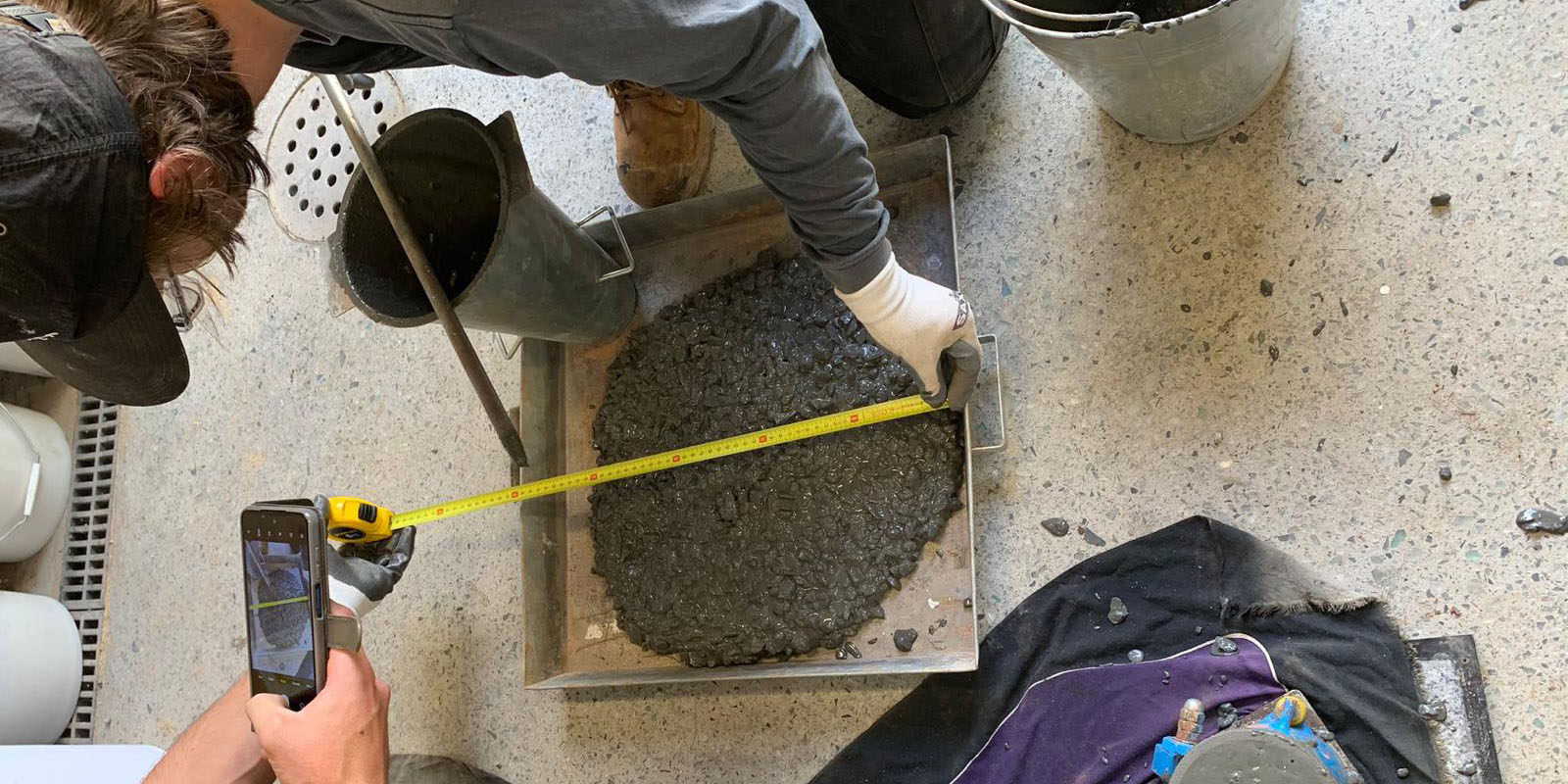
Geopolymer concrete standards and testing
The most important properties of concrete are durability and workability.
Parameters such as compressive strength and tensile strength measure durability; while a test called ‘slump’ is used to assess the workability.
Setting time and curing time are important to both workability and durability.
The Colliecrete project will assess, measure and compare all laboratory test and trial products against published industry standards.
Traditional concrete uses vast amounts of energy due to the high temperatures required in its production.


Strength
The compressive strength of concrete is measured by how much force is required to crush it, which is important in the design of structures such as bridges and buildings.
In pavements and pavers on ground, the design is usually based on flexural strength (how much force the concrete can withstand in bending before it breaks), and some applications require a degree of tensile strength (how much it can be pulled before failing).
Compressive strength is the most common assessment, measured by casting three identical, specific sized cylindrical moulds of the concrete in a prescribed manner, and then applying a measured compressive force to the cured concrete until it breaks. This test is repeated on the three samples at 7, 14 and 28 days’ curing time respectively.
Compressive strengths of 5-20MPa are typically suitable for non-structural products such as pavers, blocks and footings, 15-30MPa for residential structures, 30-60MPa for commercial structures, and 70MPa and over for high strength applications such as bridges and dams.
Workability
The ease or difficulty of pouring and moulding concrete is called workability. Slump is measured by filling a cone-shaped mould of specific height and width with the wet concrete in a prescribed manner, and then lifting the mould off and seeing how much the wet concrete cone shape collapses down (slumps).
Ideal consistency concrete (medium slump) does not crumble as it is discharged, but flows sluggishly without segregation of coarse aggregate from the finer material.
Mixtures of such consistency are suitable for most work, but some applications require concrete that flows more easily (high slump) or less easily (low slump).


Setting and curing time
Workability, strength, setting time (the time taken to initially harden so moulds/formwork can be removed), and curing time (the time taken to gain sufficient initial strength), are all interrelated.
Development of a ‘recipe’ for a concrete product must counterbalance all of these parameters.
Other tests
Other more complex laboratory tests will be used for the research and due diligence purposes.
This may include tests such as flyash particle size distribution, chemical analysis to determine silica, alumina, calcium and other elemental ratios, microscopy and morphology to understand the type and nature of the flyash particles, and environmental impact testing to provide assurance that no unacceptable levels of heavy metals or radioactivity leaching from the geopolymer are experienced.



